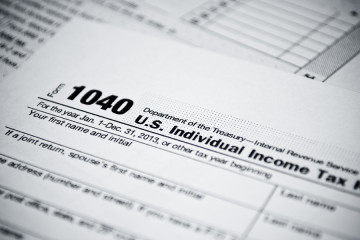Oil Trades Near $36 as U.S. Moves Toward Lifting of Export Ban

©2015 Bloomberg News
NZDQ2V6TTDS4
NZDQ2V6TTDS4
(Bloomberg) — Oil held gains after rebounding from the lowest price since February 2009 as the U.S. Congress advanced on a deal to allow unfettered crude exports for the first time in 40 years.
Futures were little changed in New York after rising 1.9 percent Monday, the first increase in seven days. Senate leaders faced resistance from some Republicans and House Democrats, who were willing to discuss lifting trade restrictions depending on concessions they’d get in exchange, according to a Democratic leadership aide. OPEC President Emmanuel Ibe Kachikwu said the producers group may need a “very urgent meeting” if prices don’t recover by February.
Oil is trading at levels last seen during the global financial crisis after the Organization of Petroleum Exporting Countries effectively abandoned output limits as it sought to defend market share. Hedge funds and other large speculators raised bets on falling U.S. crude prices to a record while the International Energy Agency predicted the market will remain in surplus at least until late 2016.
“If the U.S. starts to ship its crude to Asia, this will further intensify competition with OPEC producers,” Kang Yoo Jin, a commodities analyst at NH Investment & Securities Co. in Seoul, said by phone. If oil drops to about $30 a barrel, OPEC “will find the need to protect prices as internal discord and conflicts among themselves persist.”
Futures were little changed in New York after rising 1.9 percent Monday, the first increase in seven days. Senate leaders faced resistance from some Republicans and House Democrats, who were willing to discuss lifting trade restrictions depending on concessions they’d get in exchange, according to a Democratic leadership aide. OPEC President Emmanuel Ibe Kachikwu said the producers group may need a “very urgent meeting” if prices don’t recover by February.
Oil is trading at levels last seen during the global financial crisis after the Organization of Petroleum Exporting Countries effectively abandoned output limits as it sought to defend market share. Hedge funds and other large speculators raised bets on falling U.S. crude prices to a record while the International Energy Agency predicted the market will remain in surplus at least until late 2016.
“If the U.S. starts to ship its crude to Asia, this will further intensify competition with OPEC producers,” Kang Yoo Jin, a commodities analyst at NH Investment & Securities Co. in Seoul, said by phone. If oil drops to about $30 a barrel, OPEC “will find the need to protect prices as internal discord and conflicts among themselves persist.”
U.S. Exports
WTI for January delivery was at $36.34 a barrel on the New York Mercantile Exchange, up 3 cents, at 12:07 p.m. Seoul time. The contract closed 69 cents higher on Monday after declining to $34.53, the lowest intraday price since February 2009. The volume of all futures traded was about 24 percent below the 100- day average.
Brent for January settlement, which expires Wednesday, slid 6 cents to $37.86 a barrel on the London-based ICE Futures Europe exchange. The European benchmark crude was at a $1.53 premium to WTI, the narrowest since January. The more-active February contract was 3 cents lower at $38.13.
The U.S. restriction on crude exports was established during the energy supply shortages of the 1970s. Lifting the ban could drive the most important change in the nation’s oil policy in more than a generation, allowing the world’s biggest oil and gas producer to join other countries in allowing unfettered access to its supplies.
Repealing the trade limits would also put U.S. crude on the same footing as refined products such as gasoline and diesel, which can be freely sold overseas.
Brent for January settlement, which expires Wednesday, slid 6 cents to $37.86 a barrel on the London-based ICE Futures Europe exchange. The European benchmark crude was at a $1.53 premium to WTI, the narrowest since January. The more-active February contract was 3 cents lower at $38.13.
The U.S. restriction on crude exports was established during the energy supply shortages of the 1970s. Lifting the ban could drive the most important change in the nation’s oil policy in more than a generation, allowing the world’s biggest oil and gas producer to join other countries in allowing unfettered access to its supplies.
Repealing the trade limits would also put U.S. crude on the same footing as refined products such as gasoline and diesel, which can be freely sold overseas.
OPEC Supply
Oil prices “should begin to trend upwards at about February of next year,” Kachikwu, who’s also Nigeria’s minister of state for petroleum resources, said in Abuja. OPEC failed to agree to production curbs at a Dec. 4 meeting, instead setting aside its quota of 30 million barrels a day until members gather again in June. The group is showing “renewed determination” to maximize output, the IEA said it a report last week.
U.S. crude inventories probably decreased by 500,000 barrels in the week ended Dec. 11, according to the median estimate in a Bloomberg survey of nine analysts before Energy Information Administration data Wednesday. Stockpiles were at 485.9 million barrels through Dec. 4, more than 120 million above the five-year seasonal average.
U.S. crude inventories probably decreased by 500,000 barrels in the week ended Dec. 11, according to the median estimate in a Bloomberg survey of nine analysts before Energy Information Administration data Wednesday. Stockpiles were at 485.9 million barrels through Dec. 4, more than 120 million above the five-year seasonal average.
To contact the reporter on this story: Heesu Lee in Seoul at hlee425@bloomberg.net To contact the editors responsible for this story: Ramsey Al-Rikabi at ralrikabi@bloomberg.net Yee Kai Pin, Abhay Singh







No Comment